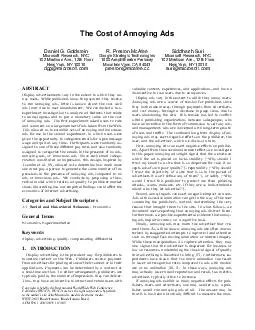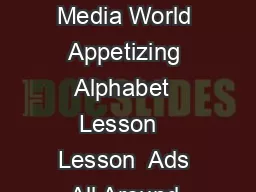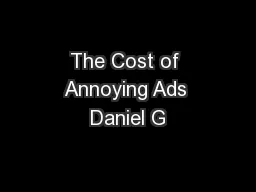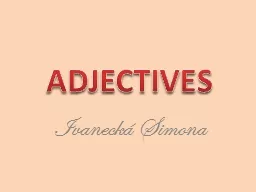PDF-The Cost of Annoying Ads Daniel G
Author : karlyn-bohler | Published Date : 2014-10-03
Goldstein Microsoft Research NYC 102 Madison Ave 12th Floor New York NY 10016 dggmicrosoftcom R Preston McAfee Google Strategic Technologies 1600 Amphitheatre Parkway
Presentation Embed Code
Download Presentation
Download Presentation The PPT/PDF document "The Cost of Annoying Ads Daniel G" is the property of its rightful owner. Permission is granted to download and print the materials on this website for personal, non-commercial use only, and to display it on your personal computer provided you do not modify the materials and that you retain all copyright notices contained in the materials. By downloading content from our website, you accept the terms of this agreement.
The Cost of Annoying Ads Daniel G: Transcript
Download Rules Of Document
"The Cost of Annoying Ads Daniel G"The content belongs to its owner. You may download and print it for personal use, without modification, and keep all copyright notices. By downloading, you agree to these terms.
Related Documents














